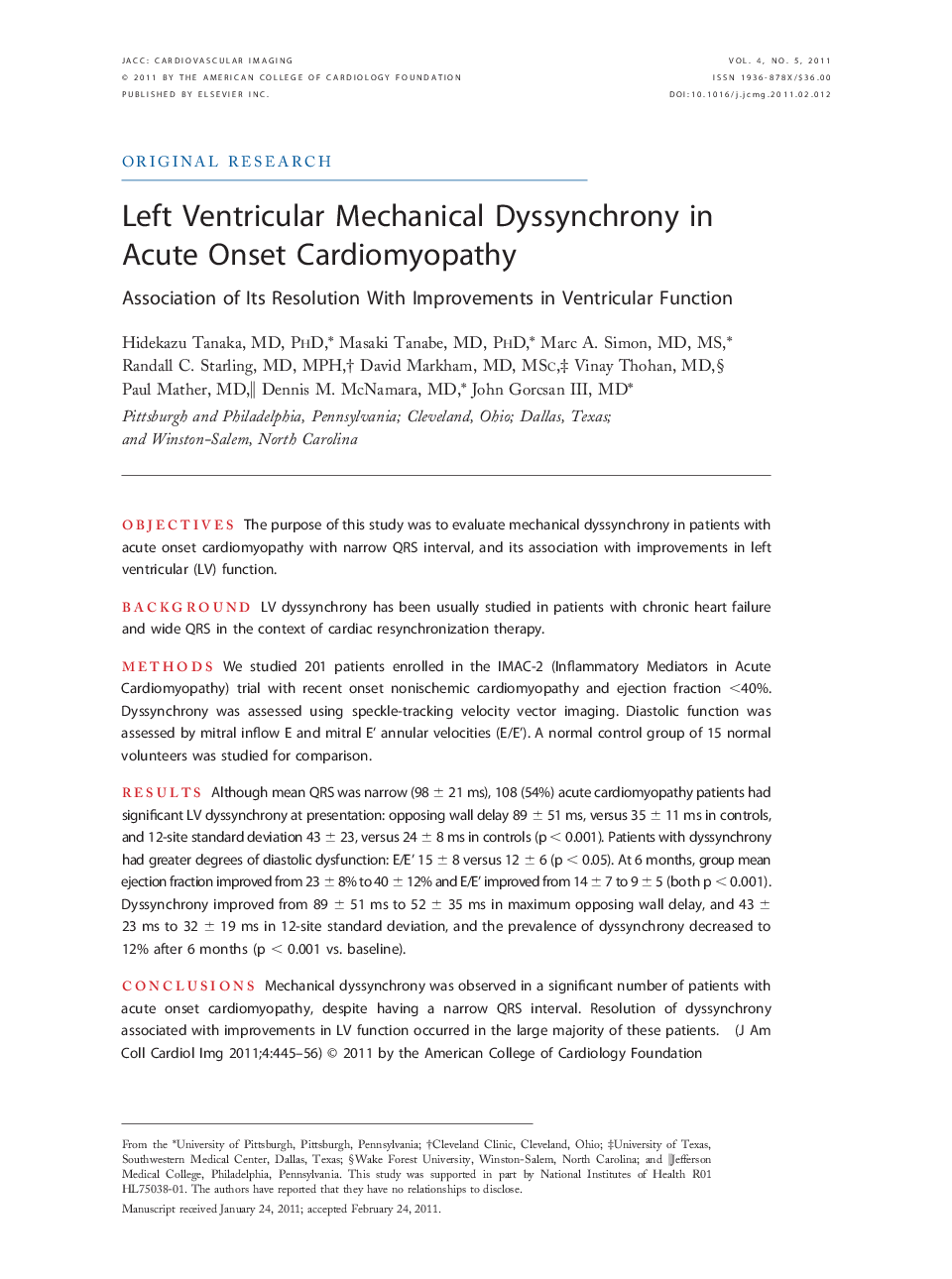| کد مقاله | کد نشریه | سال انتشار | مقاله انگلیسی | نسخه تمام متن |
|---|---|---|---|---|
| 2938634 | 1176949 | 2011 | 12 صفحه PDF | دانلود رایگان |

ObjectivesThe purpose of this study was to evaluate mechanical dyssynchrony in patients with acute onset cardiomyopathy with narrow QRS interval, and its association with improvements in left ventricular (LV) function.BackgroundLV dyssynchrony has been usually studied in patients with chronic heart failure and wide QRS in the context of cardiac resynchronization therapy.MethodsWe studied 201 patients enrolled in the IMAC-2 (Inflammatory Mediators in Acute Cardiomyopathy) trial with recent onset nonischemic cardiomyopathy and ejection fraction <40%. Dyssynchrony was assessed using speckle-tracking velocity vector imaging. Diastolic function was assessed by mitral inflow E and mitral E' annular velocities (E/E'). A normal control group of 15 normal volunteers was studied for comparison.ResultsAlthough mean QRS was narrow (98 ± 21 ms), 108 (54%) acute cardiomyopathy patients had significant LV dyssynchrony at presentation: opposing wall delay 89 ± 51 ms, versus 35 ± 11 ms in controls, and 12-site standard deviation 43 ± 23, versus 24 ± 8 ms in controls (p < 0.001). Patients with dyssynchrony had greater degrees of diastolic dysfunction: E/E' 15 ± 8 versus 12 ± 6 (p < 0.05). At 6 months, group mean ejection fraction improved from 23 ± 8% to 40 ± 12% and E/E' improved from 14 ± 7 to 9 ± 5 (both p < 0.001). Dyssynchrony improved from 89 ± 51 ms to 52 ± 35 ms in maximum opposing wall delay, and 43 ± 23 ms to 32 ± 19 ms in 12-site standard deviation, and the prevalence of dyssynchrony decreased to 12% after 6 months (p < 0.001 vs. baseline).ConclusionsMechanical dyssynchrony was observed in a significant number of patients with acute onset cardiomyopathy, despite having a narrow QRS interval. Resolution of dyssynchrony associated with improvements in LV function occurred in the large majority of these patients.
Journal: JACC: Cardiovascular Imaging - Volume 4, Issue 5, May 2011, Pages 445–456